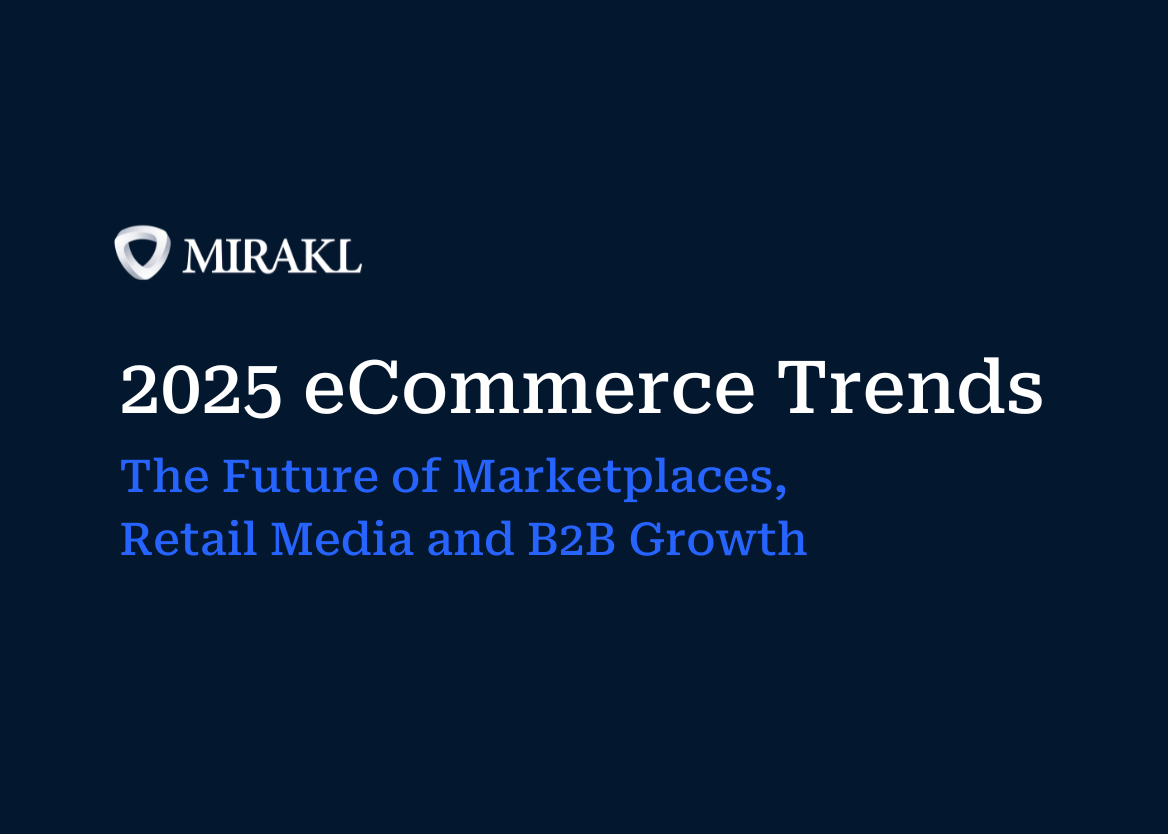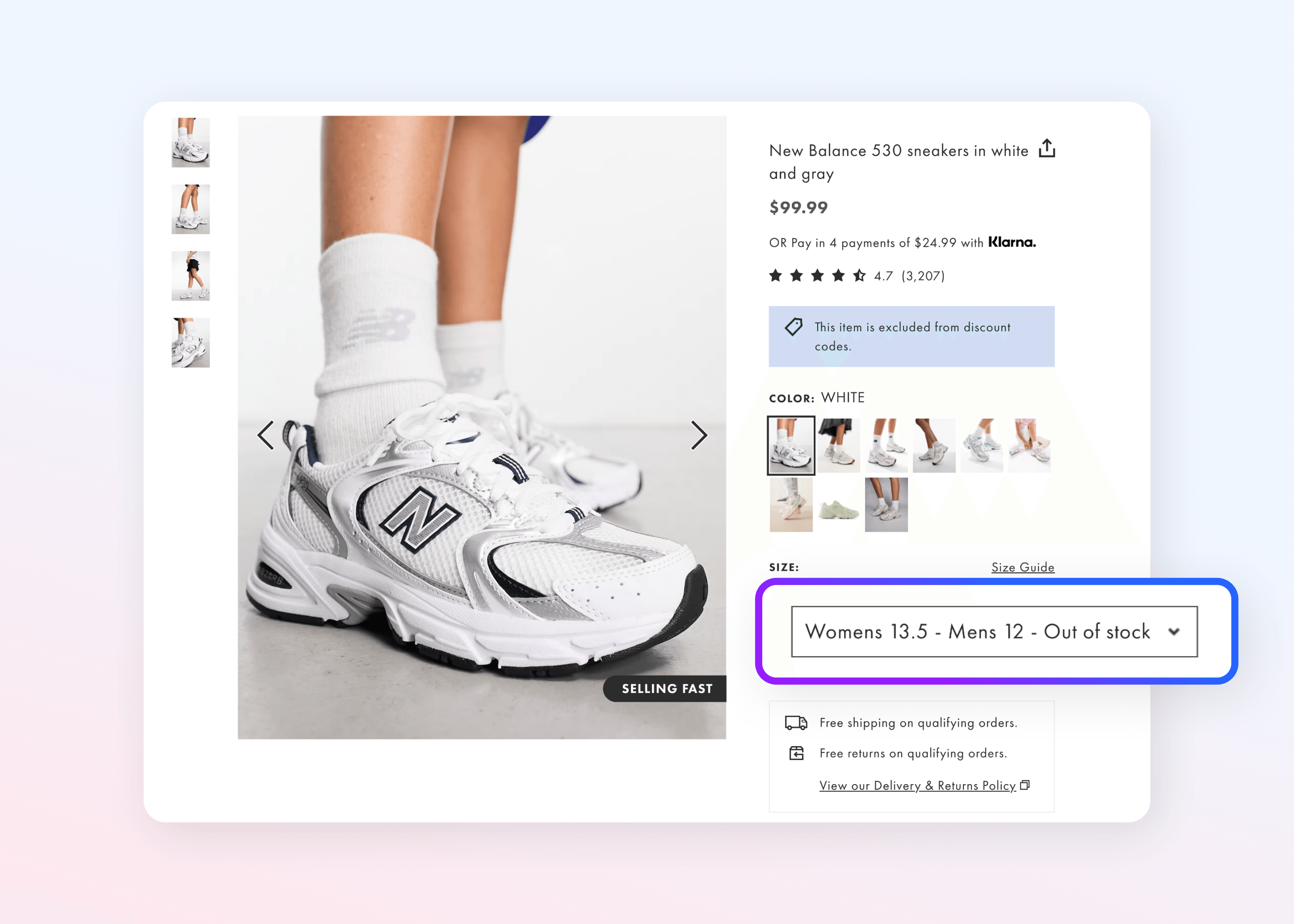2025 eCommerce trends: the future of marketplaces, retail media and B2B growth

Driven by shifting markets and increasing buyer demands, the pressure is on for businesses of all sizes to rethink their eCommerce strategy. Research shows that eCommerce sales growth has slowed since the pandemic spike in 2020. This, coupled with growing customer expectations, makes competition tougher than ever. Here are key trends to watch in 2025.
1. Marketplaces continue to drive consistent growth
The rise of online marketplaces has reshaped the eCommerce industry, becoming a dominant force in how consumers shop online. Marketplaces make it easier to connect customers and sellers, offering convenience, variety and accessibility like never before. That's why many large businesses have turned to the marketplace model last year, including Nordstrom, Best Buy, and Henry Schein.
In 2014, marketplaces accounted for 40% of global online sales. By 2024, that figure grew to 67%. Marketplaces have also consistently grown at a rate of six times faster than traditional eCommerce year-over-year, highlighting the transformative impact on retail.
With a marketplace model, businesses can unlock:
Expanded Product Offerings: Marketplaces allow retailers to broaden their product catalog offering customers more choices.
Reduced Operational Costs: Retailers can offset logistics, warehousing and inventory management costs to third-party sellers, which can improve profitability.
Improved Customer Experience: The convenience of a one-stop shop attracts customers, while the diversity of products and competitive pricing drive higher satisfaction and loyalty.
Access to New Markets: Marketplaces simplify expansion into new categories, unlocking opportunities to reach additional customer segments.
Data-Driven Insights: Through aggregated sales data, retailers can better understand customer preferences, optimize inventory, and enhance strategic decision-making.
Key Takeaway: Businesses that invest in marketplace models will scale faster, meet shifting customer expectations, and secure a competitive edge in 2025.
2. Retail media: the new flywheel for growth
We’re all familiar with the Amazon flywheel strategy: increased traffic draws in more sellers, leading to a wider product selection and ultimately happier customers. This strategy was pivotal in the history of retail, but it's no longer enough. The next era of retail will also need to account for a retail media strategy.
A survey conducted by Boston Consulting Group revealed that 44% of innovation leaders identified retail media as their top priority for eCommerce investments. This figure will likely continue to rise as retailers see the value in leveraging their platform and customer data to deliver more targeted, effective advertising.
A retail media strategy allows retailers to monetize every sales channel effectively with targeted advertisements. As a result, businesses can capture customer demand, lower acquisition costs, improve customer satisfaction, and drive sustainable, long-term growth. For sellers, retail media helps improve their discoverability and makes it easier to track relevant metrics.
Key Takeaway: Retail media and robust seller ecosystems are setting the pace for retail innovation, helping businesses grow while catering to evolving customer demands.
3. AI becomes a core strategic pillar
Artificial intelligence is evolving from merely powering generative use cases to becoming a strategic pillar for eCommerce growth. Businesses are leveraging AI to provide personalized shopping experiences, streamline supply chains, and forecast trends with greater accuracy. AI tools help improve business operations on the backend as well as customer-facing use cases, helping companies stay competitive in an evolving market.
AI is helping businesses to:
Analyze large datasets: Whether it's catalog data, product SKUs or managing inventory data, AI is emerging as a growing solution to automatically manage tedious tasks.
Deliver personalized shopping experiences: By automatically understanding customer preferences and behaviors at scale, businesses can provide tailored advertisements and communications that resonate with each individual customer.
Automated communications: AI-driven chatbots and support solutions can help customers navigate their shopping journey, answering questions and offering recommendations in real-time. This not only improves the customer experience but also frees up time for more complex tasks.
Key Takeaway: Businesses that integrate AI as a core part of their strategy are not just staying ahead—they’re redefining efficiency and customer satisfaction in eCommerce.
4. Partner with third-party sellers to better serve customers
The foundation of a successful marketplace is attracting high-quality sellers. By collaborating with third-party brands, businesses can expand their product range, fill inventory gaps, and offer customers a broader selection—all while avoiding the complexities of managing inventory in-house.
For example, Best Buy’s marketplace extends beyond consumer electronics, allowing the retailer to serve a broader audience and adapt to the ever-changing retail landscape. This strategy not only opens up new revenue streams but also enhances customer loyalty by providing more choices in one place.
Key Takeaway: Collaborating with third-party sellers and empowering them to thrive on your marketplace is a powerful strategy for retailers to enhance the shopping experience and stay ahead in a competitive market.
5. Start selling on multiple channels
For brands looking to increase their brand awareness and access a larger audience, marketplaces are a great option to diversify sales channels. This is especially beneficial for smaller brands with limited marketing budgets, as marketplaces provide access to customers they might not otherwise reach through traditional methods.
For example, the intimate apparel brand Adore Me leveraged the power of marketplaces to onboard to new platforms in just three weeks, allowing them to quickly expand their reach. This approach not only helped Adore Me reach more customers with a lower marketing spend but also opened the door to new customer segments they hadn't previously accessed. As a result, their innovative use of marketplaces contributed to double revenue growth in 2023.
6. B2B marketplaces: the race to become a one-stop shop
A recent report found that 8 in 10 B2B buyers prefer marketplaces over traditional eCommerce platforms. With competitive pressures mounting and buyers demanding seamless, one-stop solutions, marketplace adoption is no longer optional for wholesalers—it’s essential.
Buyers increasingly seek one-stop-shop solutions that allow them to source everything they need from a single platform. Traditional operating methods are no longer sufficient to meet these expectations, and competitors with marketplace models are gaining an edge.
Wholesalers are now at a turning point. Adopting marketplace platforms not only simplifies operations but also enables businesses to remain competitive in a rapidly evolving market. A unified, scalable approach will be key to meeting buyer demands and securing long-term success.
Key Takeaway: In 2025, B2B businesses that adapt to the marketplace model will thrive, while those that stick to outdated methods risk being left behind.
Unlock your business's full growth potential in 2025
2025 will be a pivotal year for eCommerce, as marketplaces continue to emerge as a key growth channel. Whether you’re a retailer expanding your product assortment, a wholesaler navigating the B2B transition, or a brand leveraging AI and retail media, now is the time to invest in these transformative strategies. The future of eCommerce is here—are you ready to lead the way?



